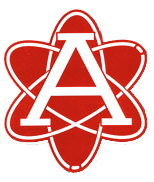School Innovation and Improvement Plan
Outcome Goals for 2024-25 School Year
School Innovation and Improvement Plan At-a-Glance
2024-25
Annandale High School
Region 6
Principal: Shawn DeRose
SIIP Outcome 1: HS Performance in Coursework
By the end of the 2024-25 school year, the annual pass rate for students with disabilities on the Reading SOL will increase from 59% to 64%. The annual pass rate for multilingual learners will increase from 43% to 48%.
By the end of the 2024-25 school year, students who have taken a reading screener will have demonstrated within-year growth will increase from 29% to 34% as measured by the new reading screener.
Strategies/Actions:
Provide regular opportunities for students to reflect on their learning experiences, set goals for growth, and track their progress over time
Strengthen differentiation by designing and implementing effective scaffolds
Explicitly model problem-solving strategies, thinking processes, and academic skills to support students in engaging with rigorous tasks
SIIP Outcome 2: HS Progression to Advanced Coursework
By the end of SY24-25, Multilingual Learners at Annandale High School will increase demonstrated progess in language acquisition from 52% to 57% as measured by WIDA.
By the end of SY24-25, the percentage of students successfully completing an HN or IB class or earning CTE finisher status will increase from 79% to 84%.
Strategies/Actions:
Increase opportunities for students to engage in rigorous and open-ended tasks that require critical and creative thinking
SIIP Outcome 3: College Career Civic Readiness
By the end of SY24-25, Annandale High School's CCCRI will increase from 76% to 85% as measured by the CCCRI dashboard.
Strategies/Actions:
Designate and optimize a CCCRI team (can be combined with the graduation team) focused on analyzing, tracking, and monitoring student data relating to students' successful progress and completion of CCCRI and graduation requirements with high frequency
Carefully review academic records and cumulative updates for newly-enrolled students to gain CCCRI experiences (i.e. academic advising for AP/IB/DE, HQWBL, CTE completer and credential, Service Learning)
Increase the collective responsibility of ALL staff in supporting school-wide On-Time Graduation and Academic and Career Planning efforts to include CCCRI (i.e. PD around mindset, cultivating belonging, positive interactions with students)
SIIP Outcome 4: Chronic Absenteeism
By the end of SY24-25 our CA will decrease from 17.0% to <15% (measured by the CA dashboard).
Strategies/Actions:
MTSS Schoolwide and Site Intervention teams analyze attendance along with behavior and wellness data bi-monthly to identify students in need of Tier 2 and Tier 3 interventions.
Schools will share multilingual attendance materials with families throughout the year to educate families regarding the importance of attendance for school success.
Teachers will use a variety of culturally-responsive practices and communication methods to provide supportive outreach to students and families when student attendance concerns arise.
SIIP Outcome 5: Discipline
By the end of the 2024-2025 school year, our RDD for students who are on FRM will decrease from 5.0 to 2.5.
Strategies/Actions:
Leverage existing structures to support discipline practices

